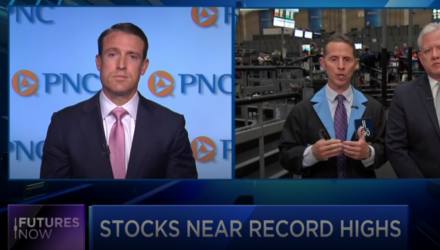With the majority of capital markets looking for a looming rate cut to boost U.S. equities sometime in 2019, it might not be as necessary for a rally as most might think, according to PNC Financial co-chief investment strategist Jeffrey Mills. This gives Wall Street bulls optimism and potential plays for leveraged exchange-traded funds (ETFs).
“Don’t fight the Fed. Enjoy the rally,” Mills said on CNBC.
If the bulls are wrong, of course, it also gives inverse ETF investors a chance to reap gains. Potential leveraged ETF plays in the Direxion Daily S&P500 Bull 3X ETF (NYSEArca: SPXL) and the Direxion Daily S&P 500 Bear 3X ETF (NYSEArca: SPXS) could have traders placing these ETFs on their watch lists.
SPXL seeks daily investment results of 300% of the daily performance of the S&P 500 Index. The fund, under normal circumstances, invests at least 80% of its net assets in financial instruments, such as swap agreements, and securities of the index, exchange-traded funds (ETFs) that track the index and other financial instruments that provide daily leveraged exposure to the index or ETFs that track the index.
“You have about 50% of individual stocks in the S&P 500 now trading above their one month highs,” Mills said, referring to the market technicals looking in good shape for another rally.
On the flip side, SPXS seeks daily investment results, of 300% of the inverse (or opposite) of the daily performance of the S&P 500 Index. The fund, under normal circumstances, invests in swap agreements, futures contracts, short positions or other financial instruments that, in combination, provide inverse (opposite) or short leveraged exposure to the index equal to at least 80% of the fund’s net assets (plus borrowing for investment purposes).
In June, the Labor Department recently showed that the U.S. economy added 224,000 jobs, which easily bested a Dow Jones estimate of 165,000. This certainly takes the sting off the May jobs report.
Last month, the Labor Department revealed that only 75,000 jobs were created in May, which fell below expectations and could be a sign that the U.S. economy could be on the verge of a slowdown. Nonetheless, the unemployment rate remained at a generational low of 3.6%.
With a central bank dependent on economic data, such as employment figures, it will be interesting to see just how much it will influence their next interest rate policy move. In the meantime, recessionary risks remain ahead.
Additionally, one Federal Reserve economist is saying that the current housing market is similar to recent economic slumps, with several metrics “consistent with the possibility of a late 2019 or early 2020 recession.”
For more market trends, visit ETF Trends.








